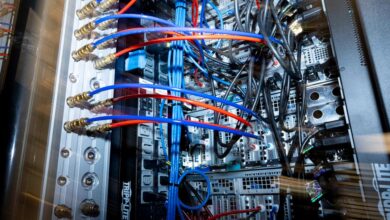How Automation Can Boost Your 401(k) Savings Big-Time

Retirement savings can often feel like a daunting task for many workers, especially with the complexities of managing workplace plans. However, recent research highlights the transformative benefits that automating key administrative aspects of the process can have for millions of Americans.
A recent analysis from the nonprofit Employee Benefits Research Institute (EBRI) reveals that by streamlining 401(k) plans, the percentage of account holders who can afford to retire increases significantly, from 62.8% to 67.6%. According to Craig Copeland, the director of wealth benefits research at EBRI, the impact of utilizing automatic features like these can play a crucial role in reducing the likelihood of workers running short of money in retirement.
Based on data from the Labor Department on 401(k) participation in the private workforce, Copeland’s findings suggest that more than 3 million Americans could gain the ability to fully afford retirement, with a particular emphasis on younger workers and people of color benefiting from increased savings. The three key features analyzed in the study include automatic enrollment, automatic contribution escalation, and automatic portability, all of which are starting to become the norm thanks to recent retirement reform legislation known as SECURE Act 2.0.
Automatic enrollment is a significant way to boost workers’ retirement savings by automatically enrolling everyone eligible for a workplace retirement plan unless they choose to opt out. By starting retirement contributions at 6% of their income, workers can increase their savings and reduce the risk of running out of money in retirement, especially for those early in their careers. With the implementation of SECURE Act 2.0, most employers are now required to automatically enroll their workers in the company’s retirement plan at a default contribution rate between 3% and 10%.
Automatic escalation involves increasing the retirement savings rate as a worker’s career progresses, with the employer raising the contribution rate by 1% of the worker’s earnings each year unless a different rate is manually selected. By automating enrollment and escalation, Copeland’s research shows that more workers would be able to save enough to cover all their retirement expenses.
Automatic portability is another crucial feature that ensures a worker’s 401(k) seamlessly follows them when changing jobs, reducing the costly and often forgotten manual rollover process. This feature, while still in its early adoption stage, could have a significant impact on younger workers, reducing their retirement savings shortfall by over 11% and increasing the share of those who can afford retirement by 3.5 percentage points.
When all three automated features are combined, the benefits are compounded, with early-career workers seeing a nearly 14 percentage point increase in those who could fully afford retirement. While it may take some time to see the full benefits of widespread automated 401(k)s due to the recent implementation of SECURE Act 2.0, it is essential for individuals to monitor their retirement plans closely to stay on track with their savings goals.
Ultimately, small oversights in retirement planning can add up to significant losses in retirement savings. By taking advantage of automated features and staying proactive in managing retirement plans, workers can set themselves up for a more secure financial future.





